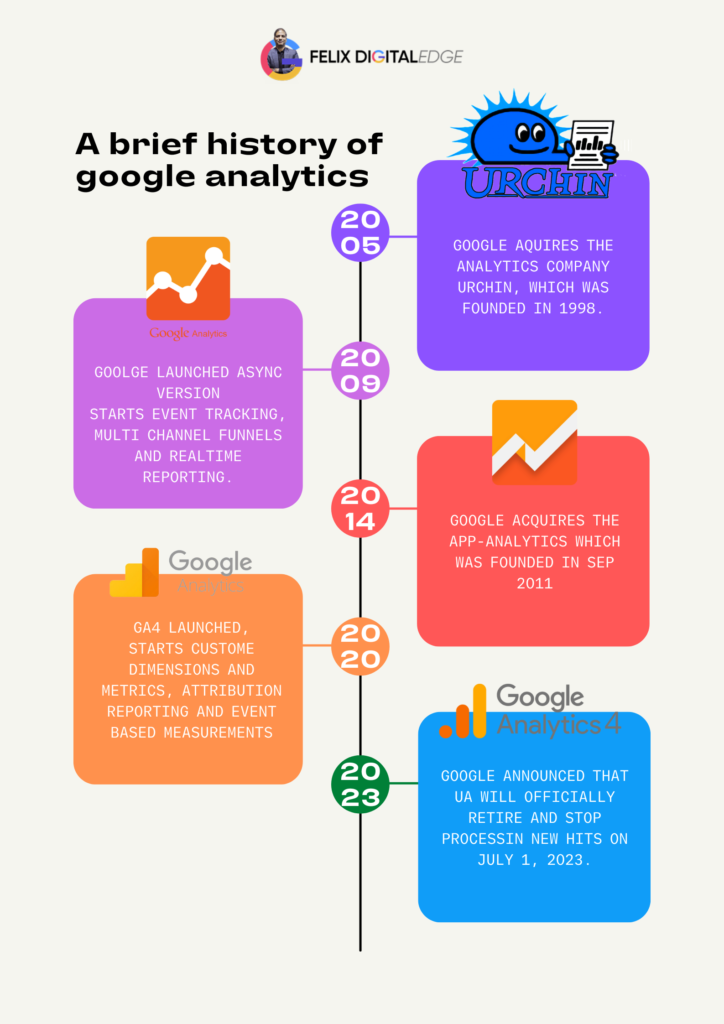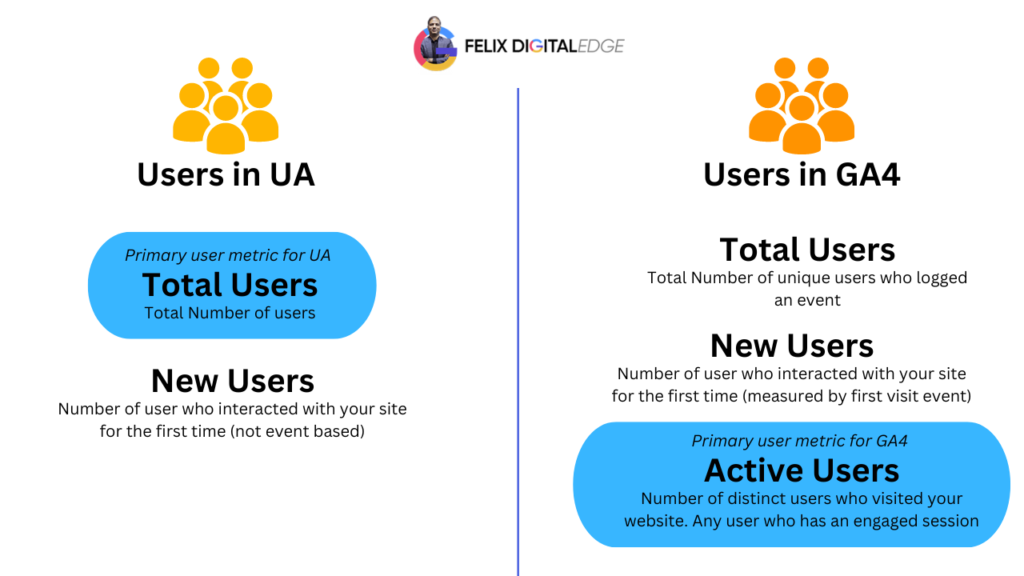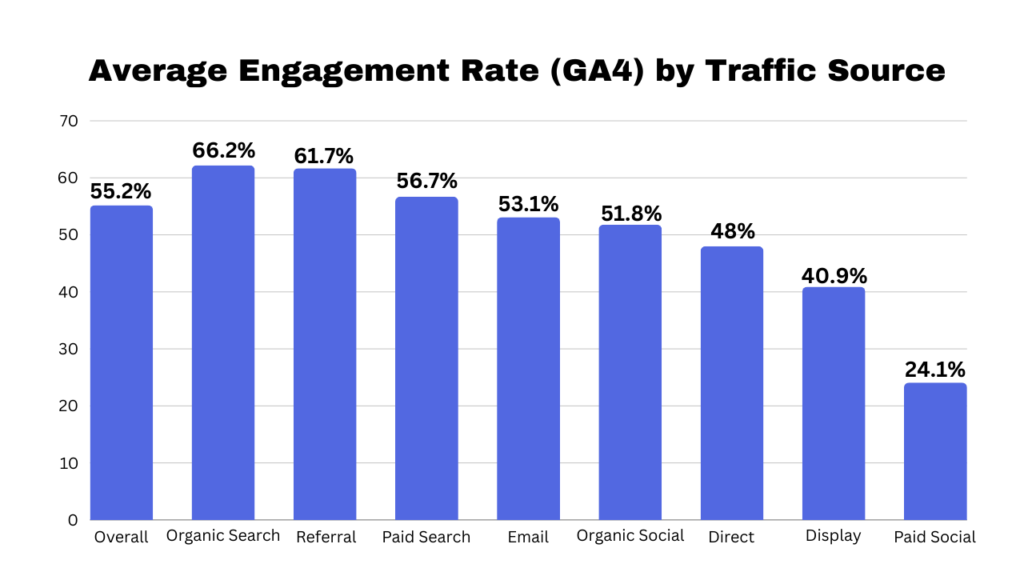The Beginner’s Guide: Top GA4 Metrics Every Marketer Should Track in 2024

What is GA4?
Google Analytics 4 (GA4) is the latest evolution of the renowned web analytics service by Google. It provides a comprehensive view of user interactions with websites and apps, delivering valuable insights for marketers. As the digital landscape evolves, migrating to GA4 is not just an option; it’s a strategic move to stay ahead.
A Brief History of Google Analytics
Google Analytics has been a cornerstone for digital marketers since its launch in 2005. Over the years, it has evolved to meet the changing needs of the industry, with GA4 emerging as the latest and most advanced iteration.

Why Migrate to GA4 Now?
The transition to GA4 is crucial for staying abreast of the latest advancements. It offers improved user-centric measurement, cross-platform tracking, and enhanced event tracking capabilities. Migrating now ensures you’re ready for the future of digital analytics. The decision to migrate to Google Analytics 4 (GA4) is not just a technical upgrade; it’s a strategic move that aligns your business with the future of digital analytics. Here are five compelling reasons to initiate the migration now:
- Enhanced User-Centric Measurement: GA4 introduces a more user-centric approach to analytics, emphasizing the individual user’s journey across devices and platforms. This shift from a session-based model to an event-based one allows for a more comprehensive understanding of user interactions, providing insights into the complete customer lifecycle.
- Cross-Platform Tracking Capabilities: In the era of multi-device users, GA4 excels by offering seamless cross-platform tracking. It allows businesses to gain a holistic view of user behavior across websites and apps, essential for understanding the increasingly complex paths users take before converting.
- Advanced Event Tracking: GA4 significantly enhances event tracking capabilities, allowing businesses to track a broader range of user interactions. This includes scrolling, video engagement, and file downloads, providing a nuanced understanding of user engagement beyond traditional pageviews. This granularity is crucial for tailoring your digital strategy to user preferences.
- Privacy-Centric Features: In response to evolving privacy concerns and regulations, GA4 incorporates privacy-centric features. By offering more user control over data sharing, it aligns with the changing landscape of data protection. Staying ahead of privacy compliance ensures your business maintains trust and integrity in the eyes of users.
- Future-Proof Your Analytics Setup: GA4 is not just an update; it’s designed to be the future of Google Analytics. By migrating now, businesses future-proof their analytics setup, ensuring they stay ahead of technological advancements and industry shifts. This proactive approach positions your business to capitalize on new features and stay competitive in the ever-evolving digital landscape.
Top GA4 Metrics Every Marketer Should Track in 2024
1. Users
The “Users” metric quantifies the number of individuals visiting your website in a specified timeframe. This essential metric helps you gauge the size of your audience and track its growth over time, providing valuable insights into your website’s reach and popularity.

2. Sessions
A “Session” refers to an individual’s browsing experience on your site within a selected period. By tracking the “Sessions” metric, you gain insights into user engagement beyond mere visitor numbers. A higher session count indicates genuine interest in your content, products, or services.
3. New Users
“New Users” represent the number of first-time visitors to your site during a specific timeframe. This metric is a key indicator of your marketing effectiveness in reaching and capturing new audiences, offering insights into your brand’s expanding reach.
4. Average Engagement Time
The “Average Engagement Time” metric measures how long, on average, users actively interact with your website. This crucial metric goes beyond page views, providing insights into the quality of user engagement. A longer average engagement time often signifies more meaningful interactions.
5. Bounce Rate
The “Bounce Rate” represents the percentage of non-engaged sessions, where users leave your site without interacting further. A high bounce rate can indicate that your webpage might not be effectively capturing the interest of your visitors, highlighting potential areas for improvement.
6. Session Conversion Rate
The “Session Conversion Rate” calculates the percentage of sessions that result in a conversion. By understanding this metric, you can assess the effectiveness of your marketing campaigns in driving desired actions, such as making a purchase or filling out a form.
7. Entrances
“Entrances” count the number of sessions that started on a specific page. This metric is vital for understanding where users initiate their journey on your site, providing insights into popular entry points and user behavior.
8. Exits
“Exits” represent the number of sessions that concluded on a specific page. By analyzing this metric, you can identify which pages are commonly the last interaction point before users leave your site, helping optimize those pages for better retention.

9. Views Per User
“Views Per User” calculates the average number of pages users view during a specified timeframe. A higher value indicates that users are exploring multiple pages, suggesting that your content is engaging and encouraging further exploration.
10. Engaged Sessions
“Engaged Sessions” measure the number of sessions that last longer than 10 seconds, have at least two page views, or trigger a conversion event. This metric provides insights into the quality of user interactions, indicating whether your site meets the needs and expectations of your audience.
11. Engagement Rate
The “Engagement Rate” calculates the percentage of engaged sessions compared to the total number of sessions. This metric offers a clear indicator of how effectively your site captures and holds the attention of users, emphasizing the importance of user engagement.

12. Returning Users
“Returning Users” represent the number of individuals who visit your site more than once during the selected timeframe. Tracking returning users is essential for understanding user retention, loyalty, and the effectiveness of your strategies in converting new users into repeat visitors. It provides insights into the audience segments that find value in your content and return for more.
At Felix Digital Edge, we specialize in implementing and analyzing GA4 for diverse websites. Our expertise ensures you harness the full potential of GA4, providing actionable insights for strategic decision-making.
Summary
In 2024, mastering GA4 metrics is essential for a data-driven approach to marketing. Felix Digital Edge stands ready to guide your migration and unlock the power of GA4, ensuring your business stays at the forefront of digital analytics. Start tracking these metrics today to propel your marketing strategy to new heights.





